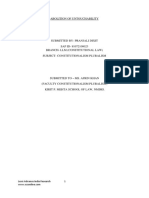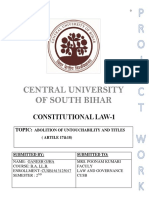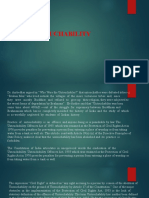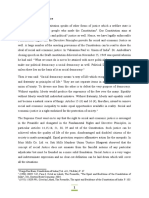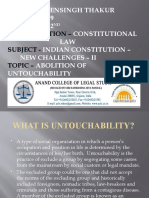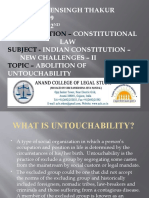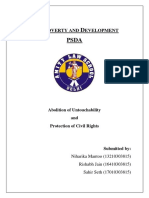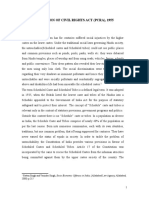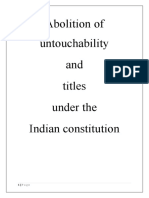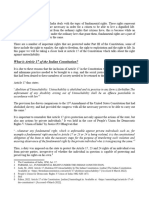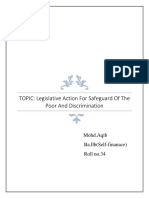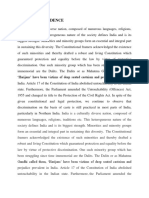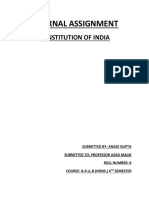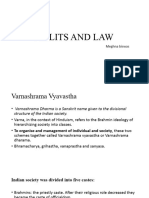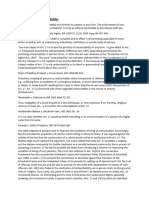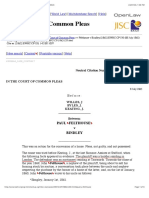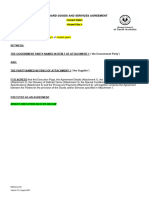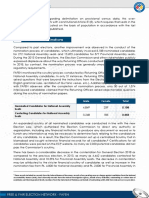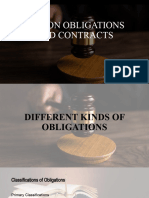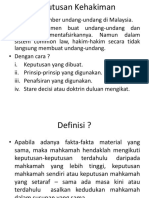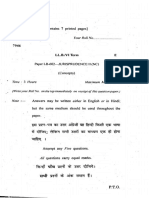'If untouchability lives, humanity must die" - Mahatma Gandhi
Introduction
Indian society has suffered social injustice for centuries due to the caste system.
Although the system was initially set up for the purpose of division of labour, it soon
turned into one that promoted discrimination by the higher castes against the lower
caste. If we talk about the traditional social laws of Hindu society the untouchables
could not use public places, ponds, pools, parks, wells, etc. They were not allowed to
go to Hindu temples, places of worship, and use roads, vehicles, schools, and public
convenience. Earlier, society consisted of 4 varnas:
◦ Brahmins;
◦ Kshatriyas;
◦ Vaishya;
◦ Shudras.
The social discrimination went to such an extent that their shadows were considered
as imminent pollutants and hence they were branded as untouchables. With all the
above-said disabilities life had been miserable for scheduled castes. In order to
tackle the problem of untouchability, the Constitution of India contains various
provisions which provide protection to the untouchables.
17. Abolition of untouchability
"Untouchability" is abolished and its practice in any form is
forbidden. The enforcement of any disability arising out of
"Untouchability" shall be an offence punishable in accordance with
law.
In Jai Singh v. Union of IndiaRajasthan High Court and
in Devrajiah v. B. Padmana of Madras High Court, the court
defined the word untouchability.The court said that ‘The subject
matter of Article 17 is not untouchable in its literal or grammatical
sense but the ‘practice as it had developed historically in the
country’. It refers to the social disabilities imposed on certain
classes of persons because of their birth in certain castes. Hence, it
does not cover the social boycott of a few individuals or their
exclusion from religious services, etc.
Problem of Untouchability and Article 17 of the Constitution
Untouchability is a direct product of the caste system. It is not merely the inability to
touch a human being of a certain caste or sub-caste. It is an attitude on the part of a
whole group of people that relates to a deeper psychological process of thought and
belief, invisible to the naked eye, translated into various physical acts and
behaviours, norms and practices.' Article 17 abolished 'Untouchability' and forbids its
practice in any form. It further declares that 'the enforcement of any disability arising
out of Untouchability shall be an offence punishable in accordance with law.'' The
subject matter of this Article is not untouchability in its literal or grammatical sense
�but the practice as it has developed historically in India. Thus, it was a product of the
Hindu Caste System, according to which a particular section amongst the Hindus
had been looked down as Untouchable by the other sections of that society." It would
not be wrong to say, therefore that the provisions of the Construction granting equal
rights to the Scheduled Castes embodied the dreams of Ambedkar, who without
doubt was the greatest emancipators of the Untouchables in modern India. He strove
for the upliftment of the Scheduled Castes, but concentrated on different areas and
their work was complementary and supplementary to each other. Ambedkar worked
primarily amongst the Scheduled Castes and fought for their political rights to secure
for them social and economic justice?
The Untouchability (Offences) Act, 1955 and the Protection of Civil Rights Act, 1955
Article 17 of the Constitution had abolished untouchability as well as its practice in
any form. Untouchability means the practices evolved as social restrictions in sharing
food, access to public places, offering prayers and performing religious services,
entry in temple and other public places and denial of access to drinking water
sources, etc.
The Parliament had enacted the Untouchability (Offences) Act, 1955 in order to
implement the mandate of Article 17. This Act contained a significant provision that
where any of the forbidden practices "is committed in relation to a member of a
Scheduled Caste" the Court shall presume, unless the contrary is proved, that such
act was committed on the ground of "Untouchability". This implied that the burden of
the proof lies on the accused and not on the prosecution. After its commencement,
there was a general feeling of dissatisfaction as the legislation failed to serve the
purpose for which it was enacted. The punishments awarded under the Act were not
adequate.
Therefore, a Committee was appointed by the Government of India in April 1965
under the Chairmanship of Shri Ilaya Perumal to study, inter-alia, problems of
Untouchability vis-a-vis the working of the Untouchability (Offences) Act, 1955 and to
suggest changes therein. The Committee's report was submitted in 1969.'° In 1976,
the Parliament amended the Untouchability (offences) Act 1955 which was renamed
as the Protection of Civil Rights Act, 1955.
